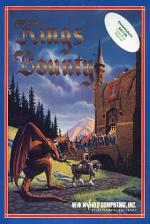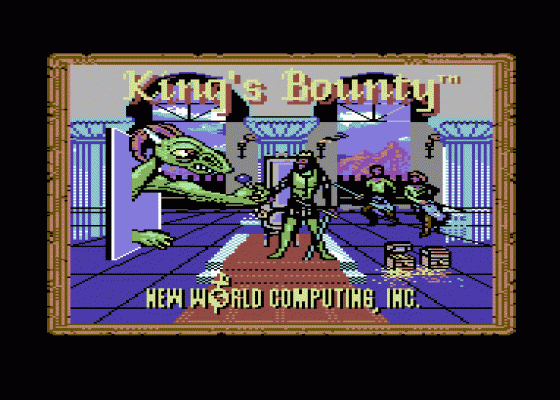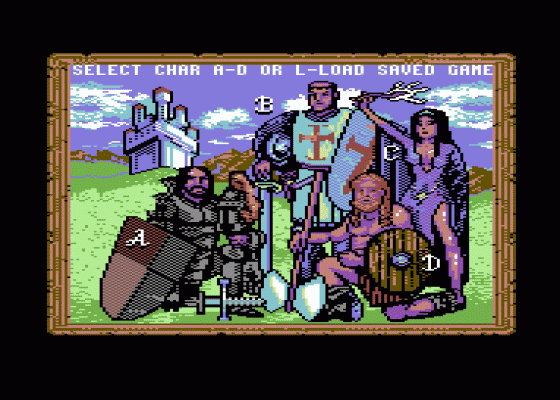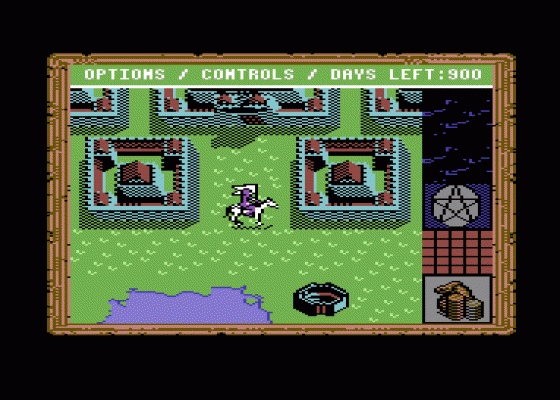
Zzap
 1st December 1990
1st December 1990
Categories: Review: Software
Publisher: New World Computing
Machine: Commodore 64/128
Published in Zzap #68
King's Bounty
Arriving on one disk with a 63-page manual (plus a poster), King's Bounty is a cross breed of RPG and Strategy. King Maximus has had his Sceptre of Order stolen by a bunch of villains. You have to retrieve it for him. Why? Because the Sceptre unites the four continents and without it chaos rules! (Or should that be '!!!')
Before you play the game you'll need to make a play disk. This is just a matter of copying side B onto a blank disk. The play disk contains one character and one world (the creation of which is a lengthy process - a suitable time for a brew-up, I reckon). So, after loading you only play from the play disk. Good, because it cuts down the risk of your master becoming damaged, especially if you're like me, i.e. too lazy to usually make master disk backups.
Back to the heat of the action, now. The first decision to make is the choice of your character (Knight, Paladin, Sorceress or Barbarian). Each has its own specific advantages and each will increase its stats once the villains are being caught. Character stats are varied. Besides your name you will find headings for: Leadership (your ability to control your troops), Commission (the weekly income provided by the king needed to recruit troops, etc), Gold, Spell Power (the level at which your character can cast spells), Max Spells (how many you have), Villains Caught, Artifacts Found (increases your income and score), Castles Garrisoned (gained after a successful siege with weapons such as catapults).

You'll need an army to fight the rising hordes though. Cash will be needed to recruit extra men, magic-users (an increasingly powerful and useful group), monsters, etc. There are 25 different categories to choose from but you are only allowed five different types in your army directly under your control. Any more will be added to your current icon/army out of your direct influence. There are a range of stats that you can examine regarding your army. They include race, hit points (individual creatures will die off as the hit point level lowers), skill level (the troops' efficiency), movement rate (the amount of actions available per turn), total damage possible, morale and weekly cost for each group.
The latter is a major incentive to increase your income by any available means. You can do this by finding treasure chests that are scattered throughout the world (you can trade the cash for leadership points, though). Finding useful objects will increase your income given by you by the king. Also, defeating enemy armies will rake in extra plunder.
The core of King's Bounty rests upon contracts received, whilst in one of the many towns, to nab a villain. Catch him and you get a piece of a map (there are 25 in all). Tach them all and the map will tell you where the sceptre is - there is a time limit on the search though. Speaking of maps, there is a handy automap option that traces the land that you have encountered. This is a very useful utility that saves time by stopping you running around in circles in your desperate search for the sceptre.
Your viewpoint is a pseudo-look down view giving a 3D effect. When you meet a wandering monster, you launch into the combat, raised side-on view. Each monster type (yours and the enemy's) is represented, complete with the total number of each. Each monster then takes his turn in striking the opponent. Although the emphasis of King's Bounty is placed upon the combat it is a lightweight affair with no real tactical problems. Most of the thought going into recruitment and organisation. Graphics are pretty without being stunning and sound is nothing special.
Although a rather simple design, King's Bounty does have many interesting features that make it pretty addictive. That element, along with its high replay factor, make it a recommended buy.
Scores
Commodore 64/128 Version| Presentation | 83% |
| Graphics | 77% |
| Sound | 71% |
| Hookability | 82% |
| Lastability | 83% |
| Overall | 80% |






